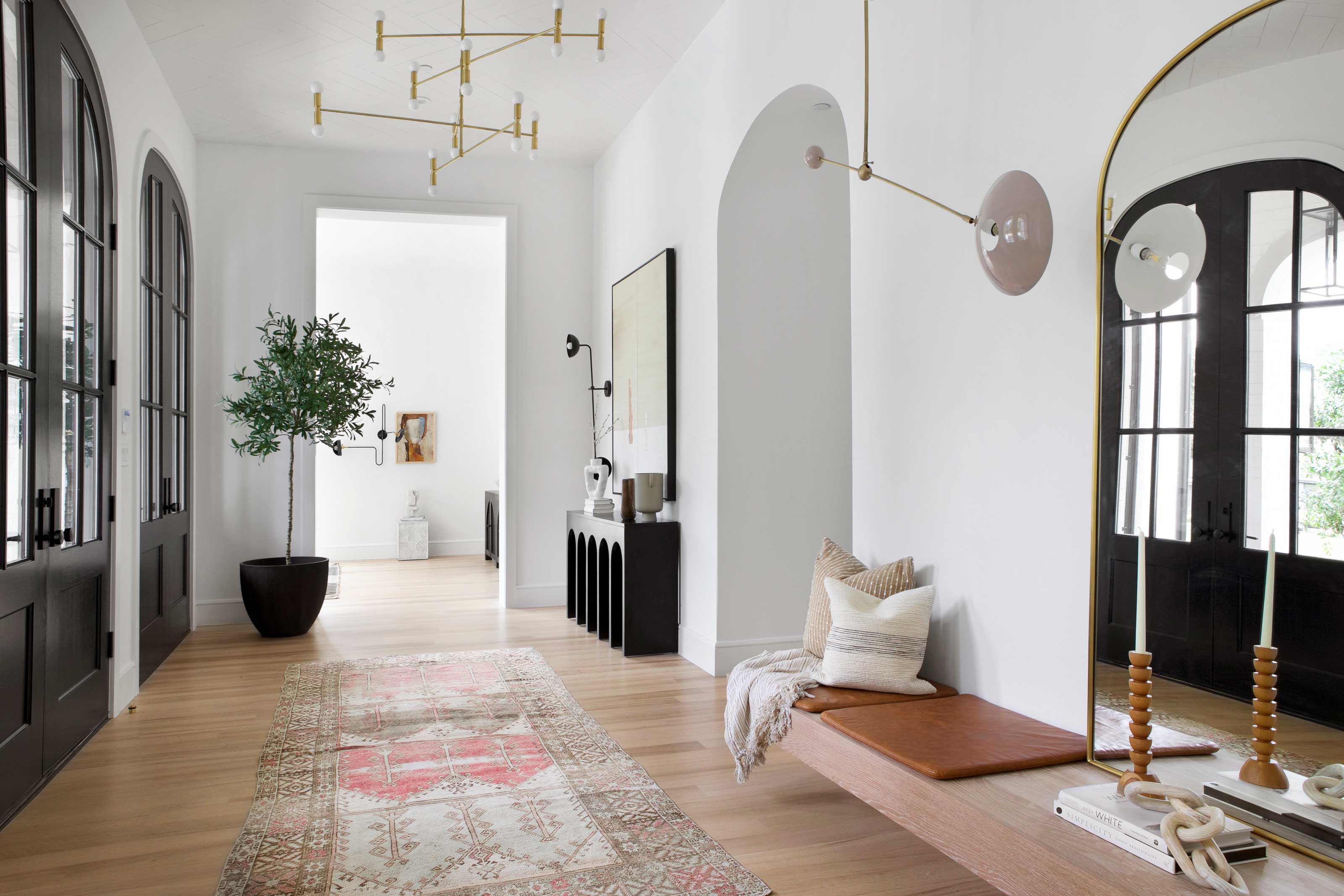
First impressions count, and as the place in your home that guests initially lay their eyes on, your entryway lighting ideas have to make an impact. Better yet, as one of the least lived-in rooms, you can also be braver and bolder with your lighting design than anywhere else.
Of course, entryway lighting still has to be practical, and lighting these often smaller and dark spaces isn't exactly straightforward, but we just love how much fun you can have with this room. What other space in your home do you spend such little time in, and yet everyone who crosses the threshold sees (postman included)?
Knowing where to start might be overwhelming, but it's easier to make a statement with your lighting in such a liminal space. Entryway ideas are relatively minimalist when it comes to furniture, so a bold lighting fixture or an ornate chandelier won't need to compete with busy patterns or lots of color. Instead, your lighting can do all the talking. From recessed lighting and statement pendants to pretty sconces and classic table lamps, here's how designers illuminate entryways for a warm welcome.
1. Make a statement with a chandelier
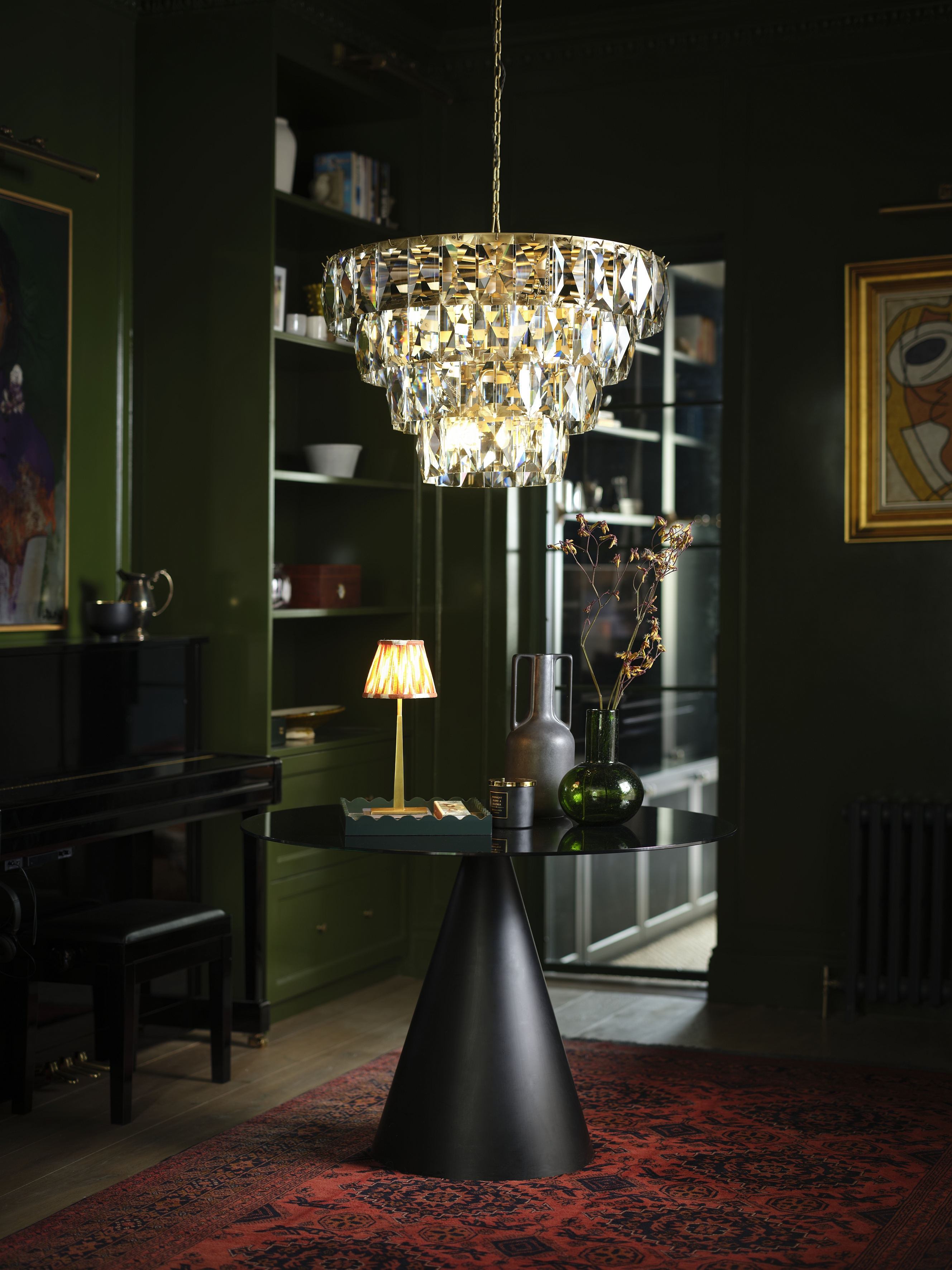
We weren't kidding when we said that entryways are the perfect place to go bold and embrace some showy lighting trends, and one of the best ways to make a statement is actually a more traditional idea — a chandelier. A luxe fixture of glass droplets takes the meaning of a grand entrance to a whole new level, and it's certainly a statement that guests can't ignore
"An entryway chandelier is perfect for creating an eye-catching entrance," says Helen Pett, design ambassador for Arteriors London. "Ornate pendants featuring beautiful design detail and luxe materials will serve as a focal point, drawing the eye upward and making the space feel grand." She urges us to consider which material to incorporate, too, adding that "glass always adds an effortless yet artful layer of elegance that feels both modern and timeless".
2. Use sconces to light a path
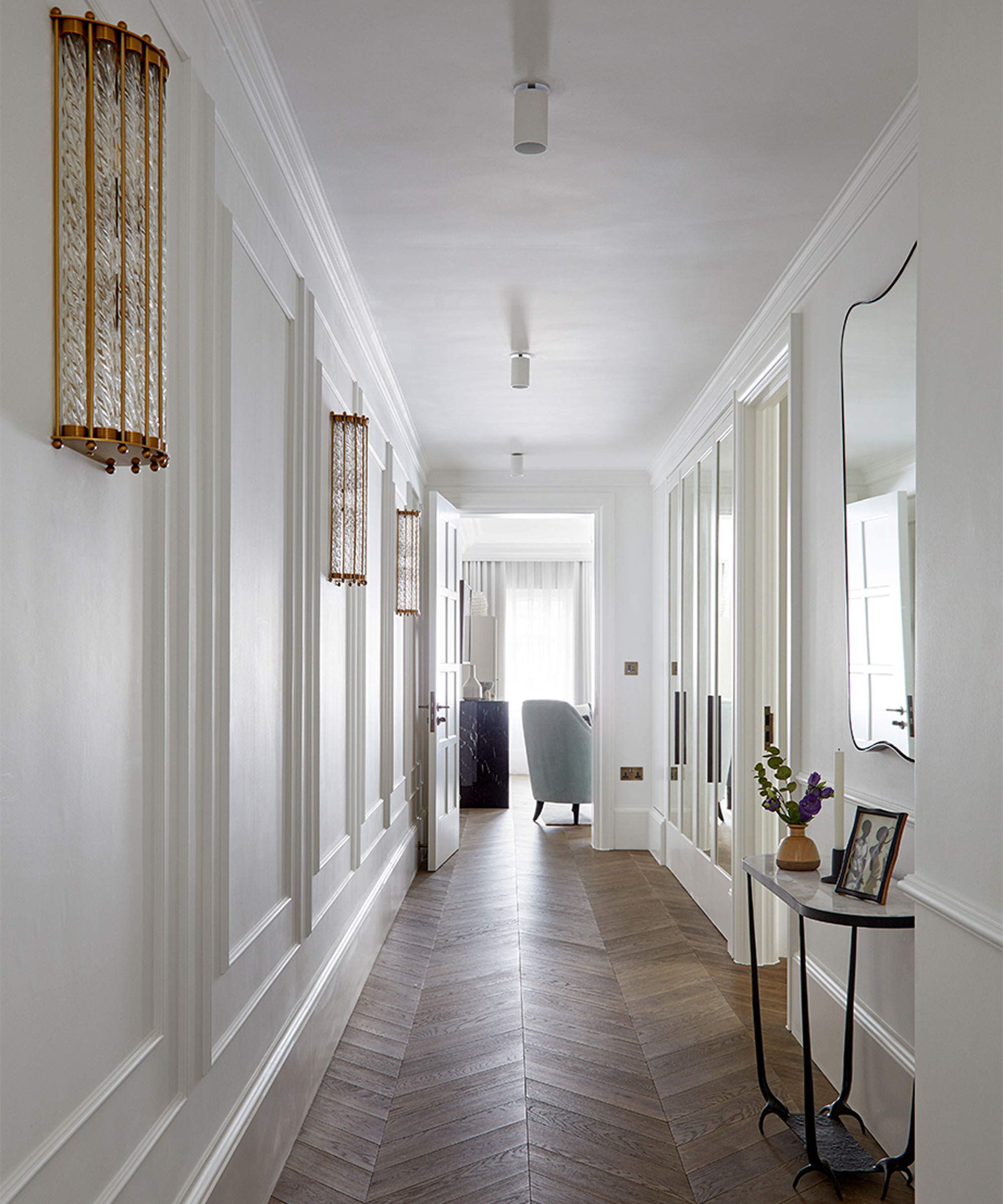
Entryway lighting has to be versatile. Sometimes, practicality takes priority. Other times, you want your lighting scheme to be more stylish and subtle. If you're hosting a formal dinner, there's nothing like some warm wall lights to lead the way through to the rest of the house, especially if you have a narrow, small entryway.
“Whilst traditional ceiling fixtures add a focal point to a hallway, wall lights are one of the most versatile and effective fixtures in an interior designer’s tool kit," says Jo Plant, Head of Design at lighting brand, Pooky. "Teamed with saturated paint colors or statement wallpapers, wall lights add a sense of drama and help to create a statement entrance. If you want to create a focal point by highlighting an architectural feature or hanging a piece of art, use an up light or picture light to draw the eye."
There's more to sconces than just aesthetics, too. If you're coming home at night, this dimmer method of lighting will also help light your way without having to disrupt kids or pets with the big light. According to Jo, they can also have great illusory effects, too. "Wall lights are perfect for spaces that have low ceilings," she says. "Installing a series of fixtures down the length of the corridor will lead the eye into the rest of your home, making it feel instantly inviting.”
3. Make use of table lamps
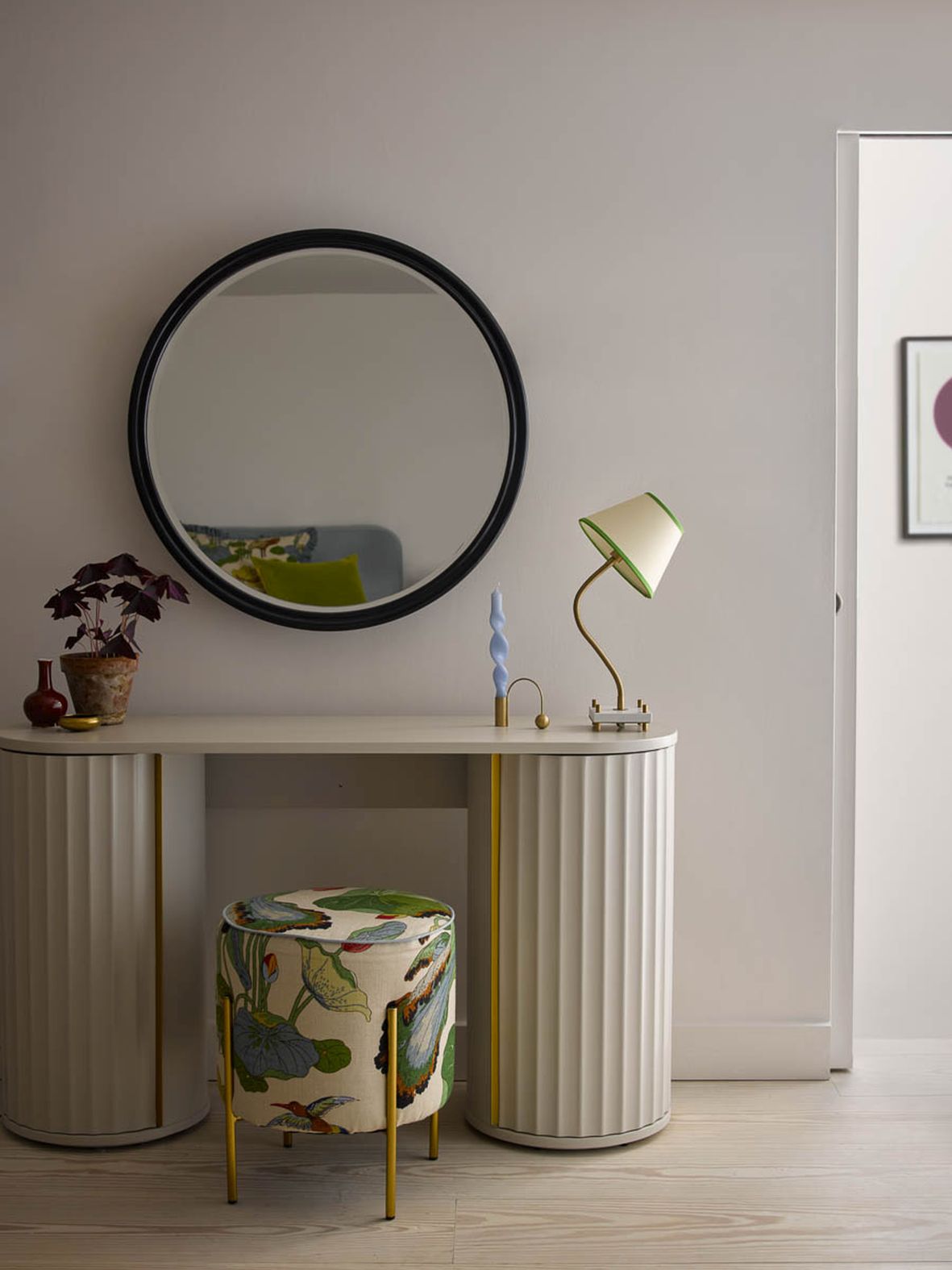
The entryway might not be the first room you'd think to put a table lamp in, but they work as great accent lights in these often stark spaces. They're a great way to illuminate dark entryway ideas, too, offering a point of contrast to soften and warm the rest of the room.
“Practical and budget-friendly, table lamps are the perfect way to add a touch of style to your entryway," says Jo. "As well as offering an opportunity to add a decorative touch, they are a practical way of adding task lighting to a console so you can find your keys and, unlike wall lights, can be simply plugged into a socket behind your console."
We recommend rechargeable cordless lamps like this one at Pooky so you can rid your space of unsightly wires and have the freedom to move your lights around at your will.
4. Use wall lights to flank seating
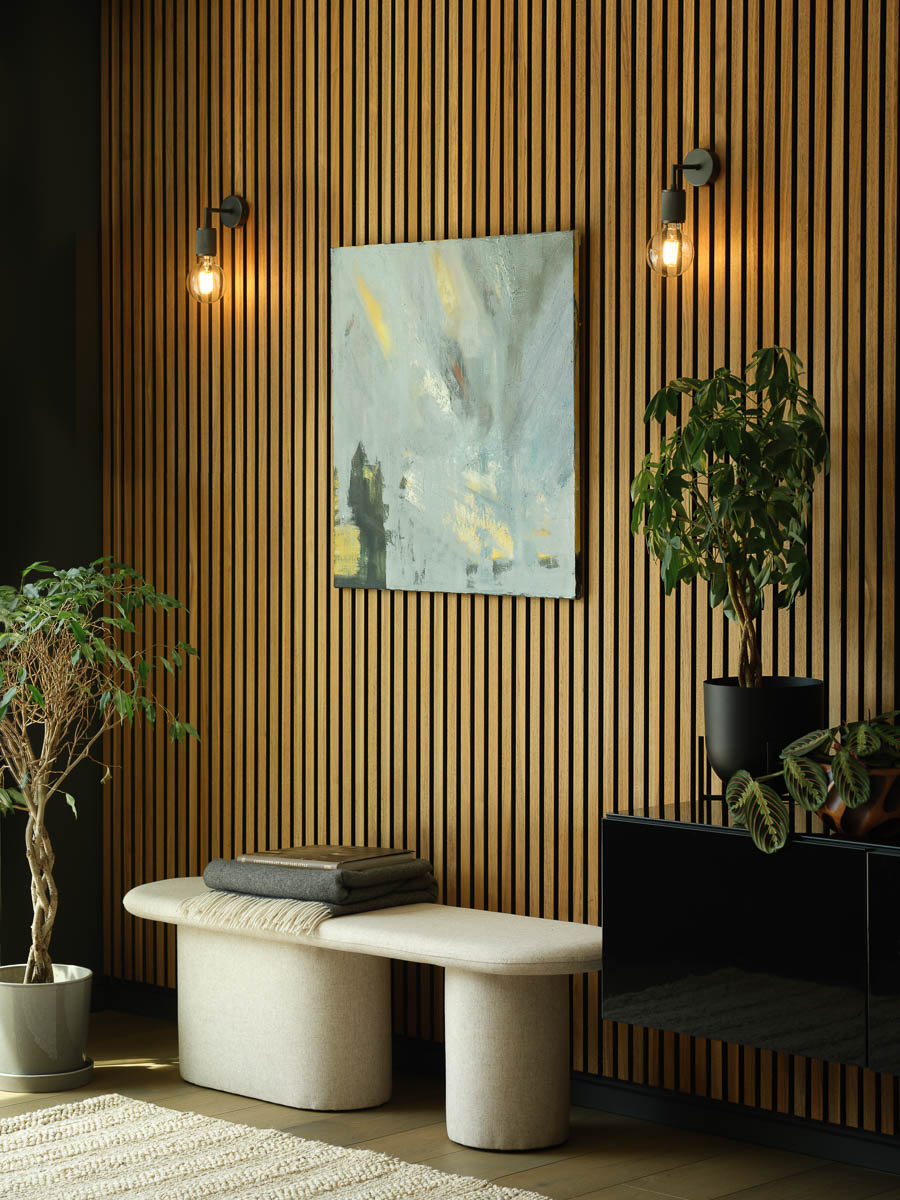
Designers love incorporating entryway seating ideas where space permits. Not only do they give you an area to sit and put on your shoes from a functional perspective, but they also make the room feel more cozy, inviting, and less cold. To give it that comfy living room feel, consider adding wall lights on either side of a bench to offer task lighting and warmth.
This is something Mara Rypacek Miller recommends, the founder of Industville specializes in lighting. "Create a moment of calm in your entranceway by using wall lights to frame a seating area," she says. "This not only produces a functional zone where you can perch to put on and take off shoes but sets the ambiance of the home as you and your guests enter."
5. Use warm, dimmable lighting
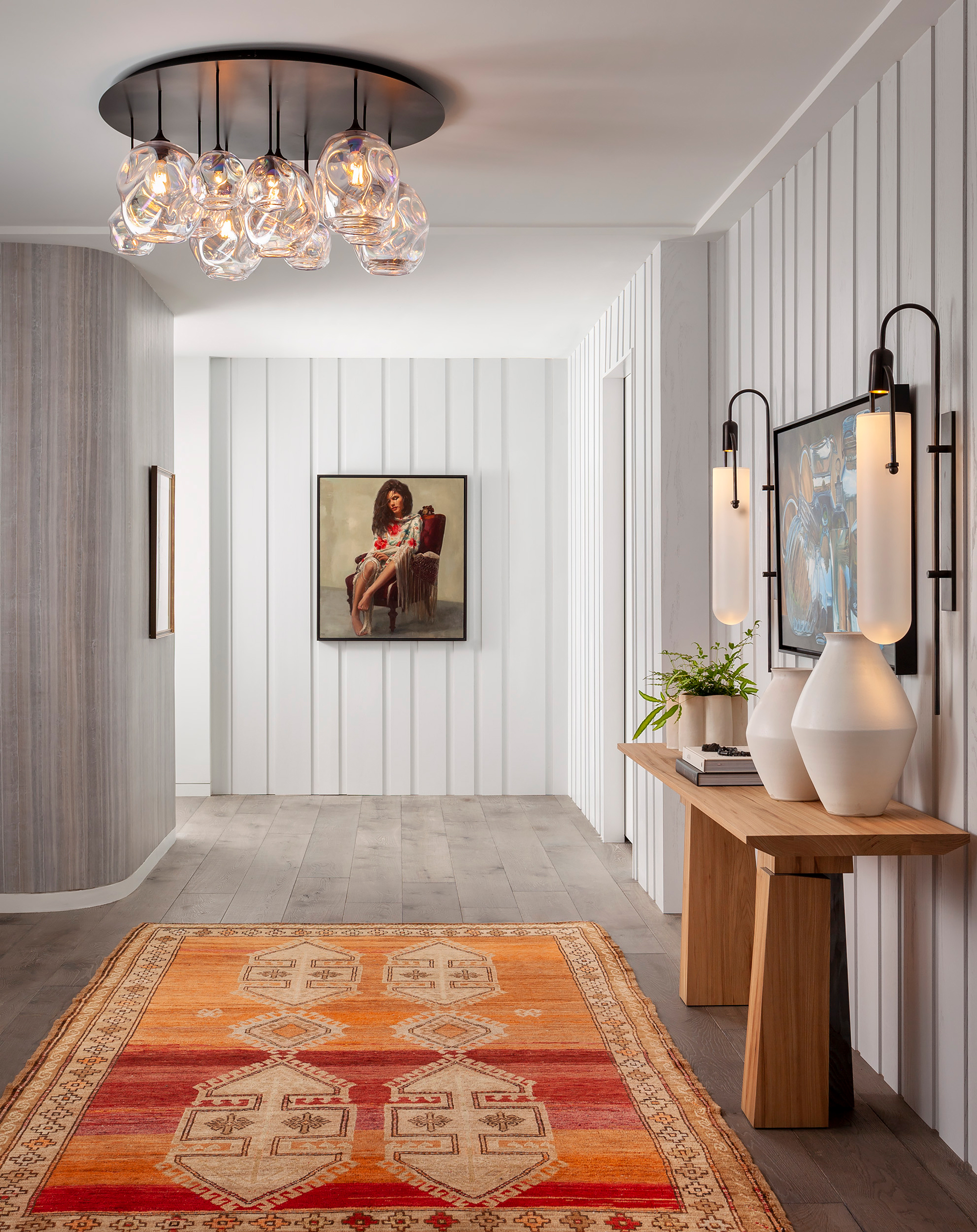
There's no space in the home that doesn't benefit from dimmable light switches. While you might think you can skip out on this feature in the entryway since it's not a space you spend much time relaxing in, to do so is a common entryway lighting mistake. This is the room of your home that sets the tone for what's to follow, so mood lighting is a must.
"Opt for dimmers to bring the light up or down as needed, providing flexibility to match different moods and times of day," says Mara. You can add dimmer bulbs or switches for all your lighting too, from overhead to sconces and everything in between.
6. Be subtle with sleek wall lights
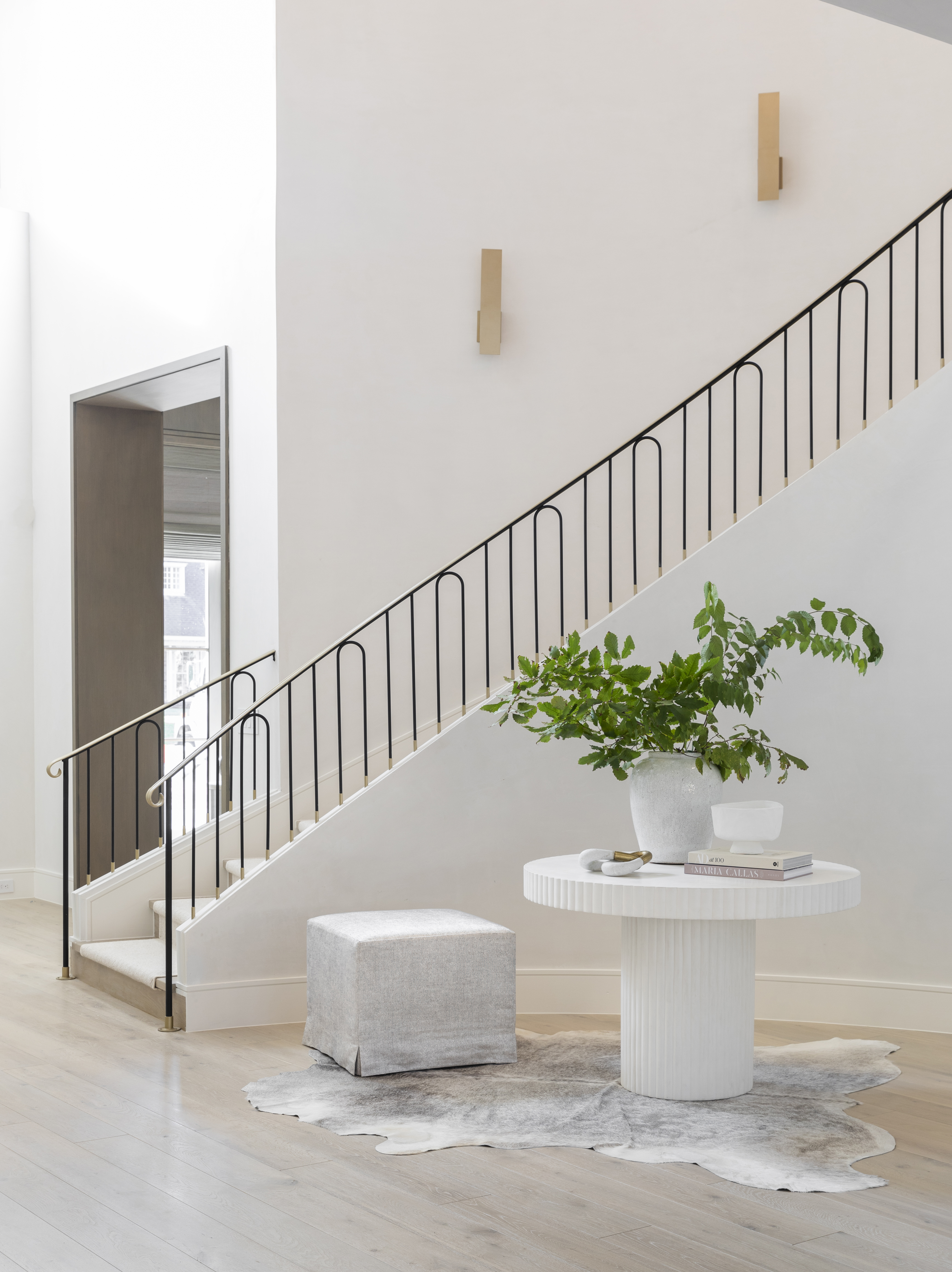
Not all entryway lighting needs to make a huge statement. Subtle and sleek wall lights can be just as impactful on a space as a massive pendant light and are ideal if you are after a more minimalist vibe.
The gold sconces used in this entryway designed by designer Marie Flanigan are the perfect example of how less can often be more. "This Houston, Texas home has an abundance of natural light throughout the day," she explains. "As such, the natural light coupled with the white color palette eliminated the need for large overhead light fixtures. However, to create ambiance and address the inevitable need for lighting, we incorporated stairway sconces for aesthetic and function."
7. Get the scale right

Choosing a lighting fixture that's proportional to the size of your entryway is key. Since these spaces differ so much in size from one home to another, getting the scale right can be tricky, but when done properly, it's one of the lighting tricks that make a small entryway look bigger.
"Scale is the most important consideration when choosing entryway lighting," says Marie. "My trick for choosing the right fixture for any space is formulaic. I add the length of the room in feet to the width of the room in feet. The sum of those two numbers is the inch size of the fixture that’s an appropriate scale. For example, a 6 ft. long room + 9 ft. wide room = 15 in. light fixture."
8. Use natural materials to add rustic texture
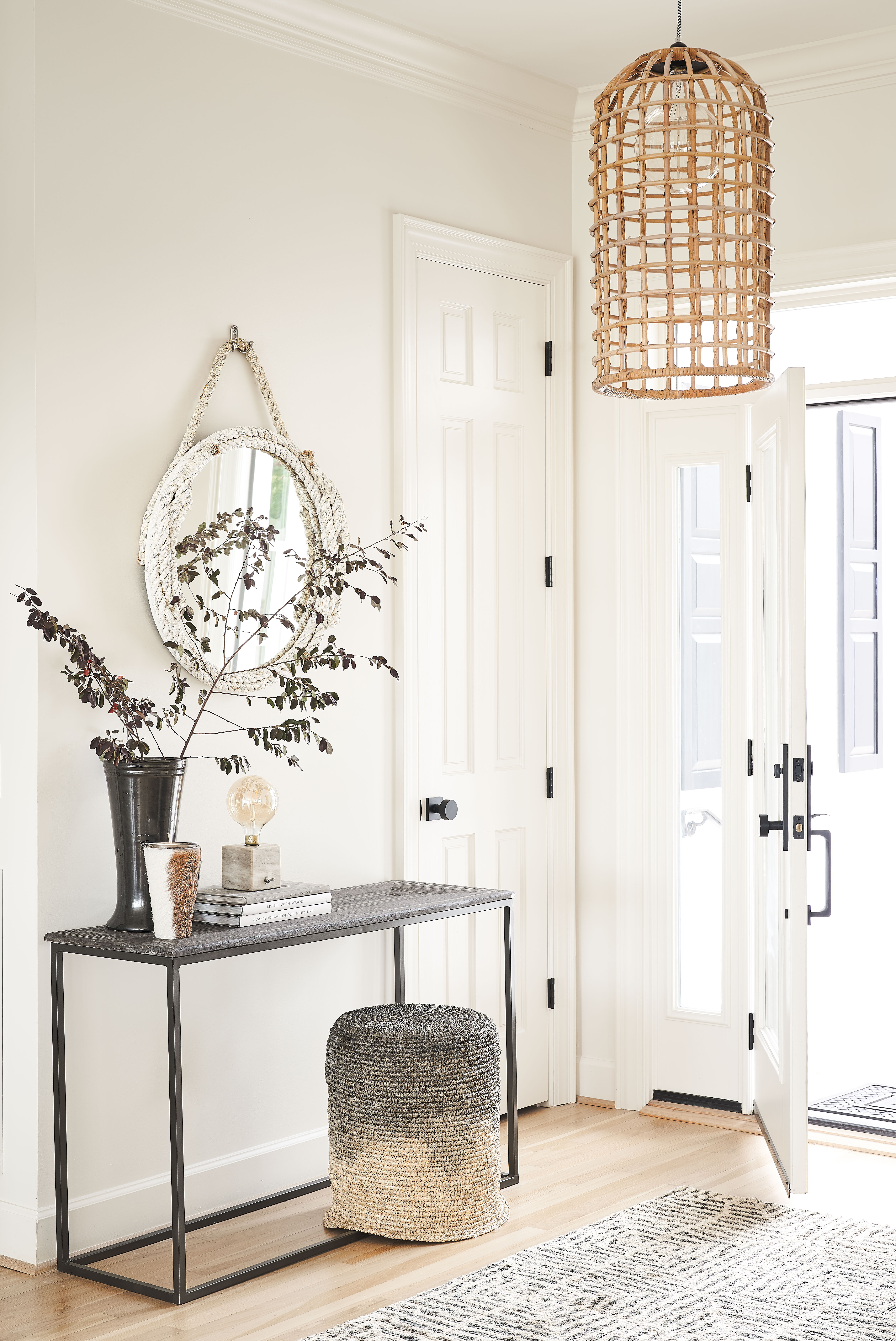
Soft, effortless, and perfect for creating that ever-popular modern rustic vibe, rattan lampshades work perfectly in an entryway. They never overwhelm a space because the natural colors and textures tone down any bold statement made by the size or shape. But, as this gorgeous beachy hallway designed by Lisa Sherry proves, pick the right design and pair it with bright neutral paint ideas and the lighting can become a focal point.
"The rattan pendant adds to the coastal beach feel," explains Lisa, who says she loves using organic materials to add texture and warmth to a space. "I always like to have functional recessed lights too but on dimmers of course. Then I add just the right light depending on what the feel is for each space. I look for the right scale and proportion and also something that makes a statement, but no LEDs. Those lights are too cold."
9. Invest in decorative hardware and switches
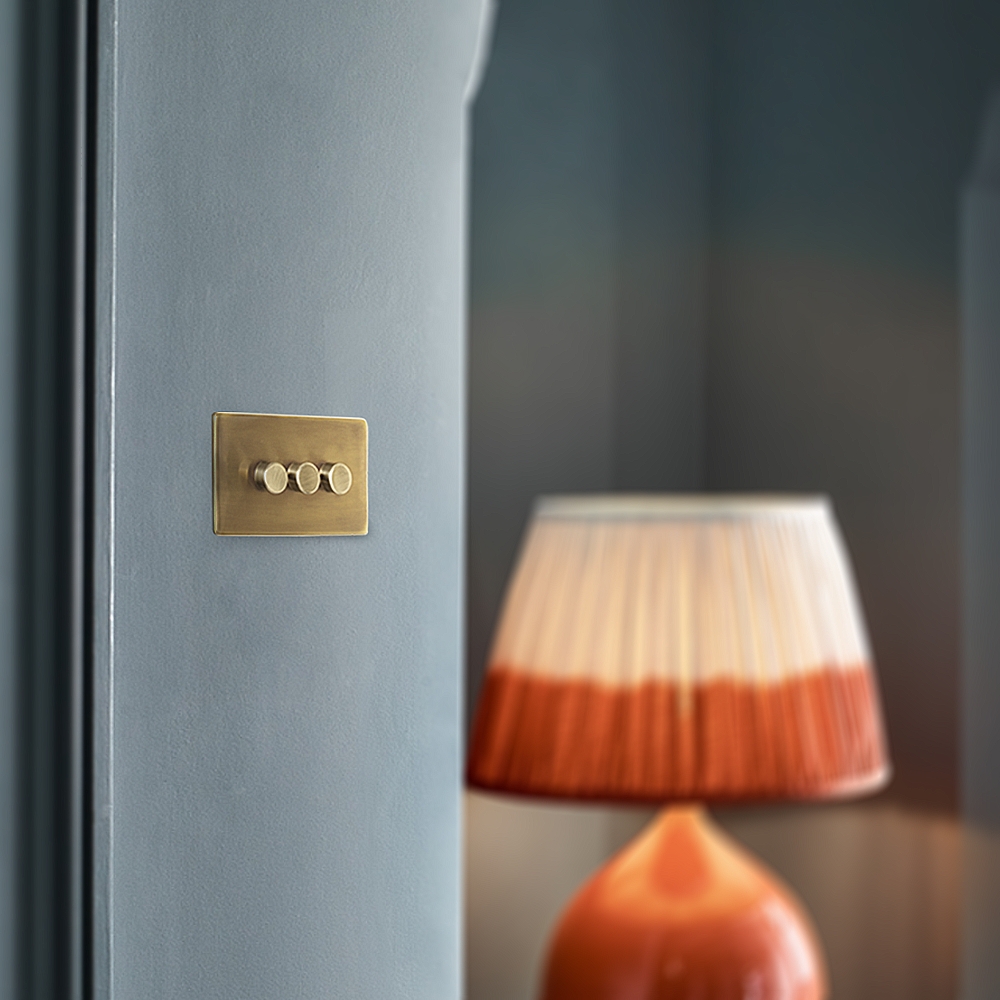
Lighting ideas go beyond the bulb or fixture itself. You should also think about your switches and hardware. How does the finish complement the rest of your space? We love small details that turn something as banal as a switch into a thing of beauty in its own right, and switch plates are a great way to do that if you can't commit to replacing light switches entirely.
"A good rule of thumb when budgeting your design scheme is investing in the pieces you touch and feel on a daily basis," says Jo. "Switches are an often-overlooked component of lighting design; however, they not only add visual interest but also offer a tactile response. Beautifully designed high-quality fittings are like choosing the perfect pair of shoes to complete an outfit, while performing a practical function they offer an opportunity to add a touch of individuality or flair and are a simple way of elevating the whole look."
10. Layer your lighting
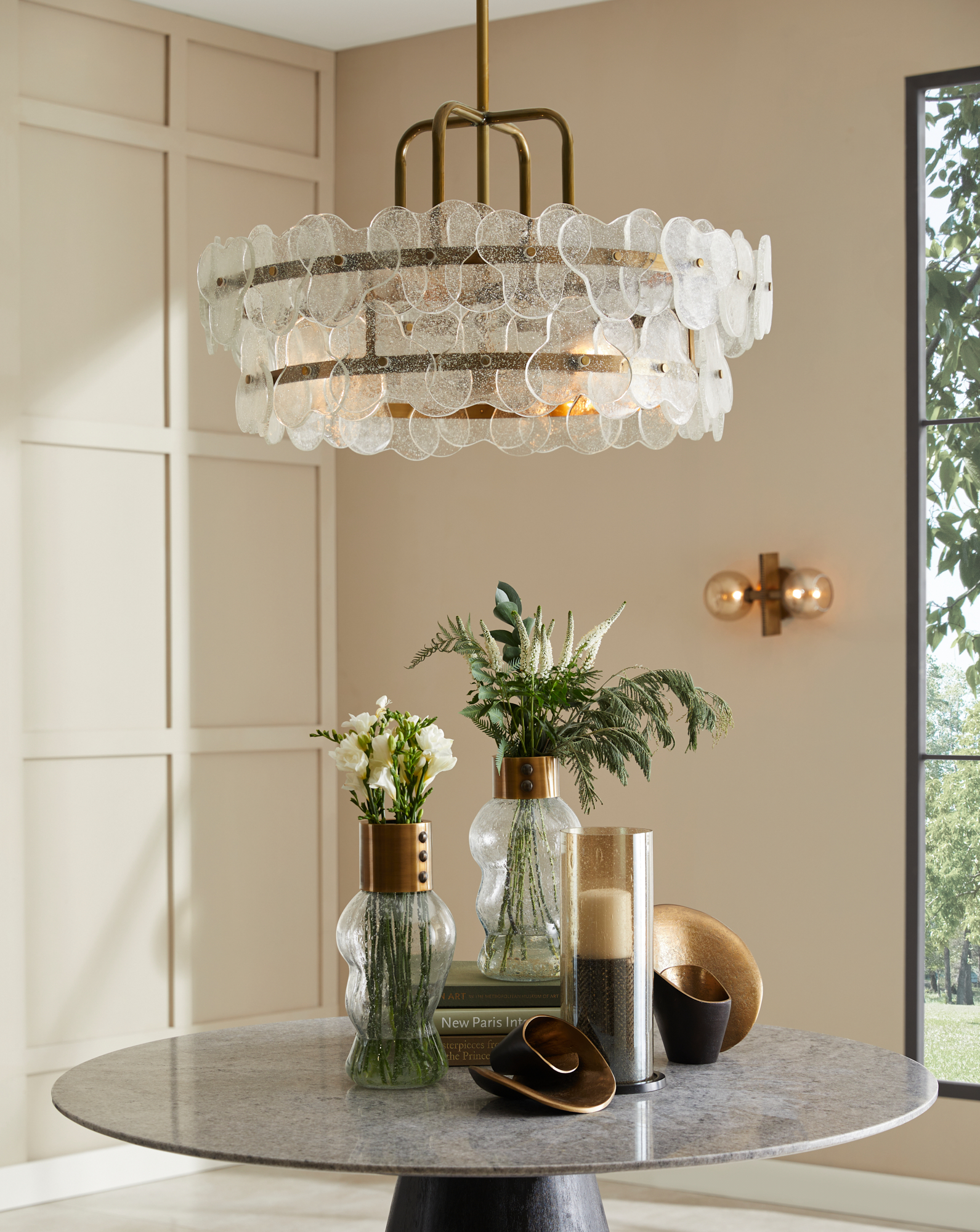
Ambient lighting is the priority when it comes to entryway lighting ideas, but don't forget to layer your scheme for more nuanced illumination that doesn't just rely on harsh overheads.
"To create a welcoming feel, varied and layered lighting is often the best approach — a mix of lamps, wall lights, and ceiling to suffuse light and create a warming glow," explains Pamela Cox of HÁM Interiors. Alongside your ceiling lights, bring in lighting at eye level too. If you have the room, floor lamps add a lovely glow, or place a couple of table lamps on a console. And if space is tight, sconces, as mentioned, will give the same effect and take up zero floor space.
11. Consider ceiling height
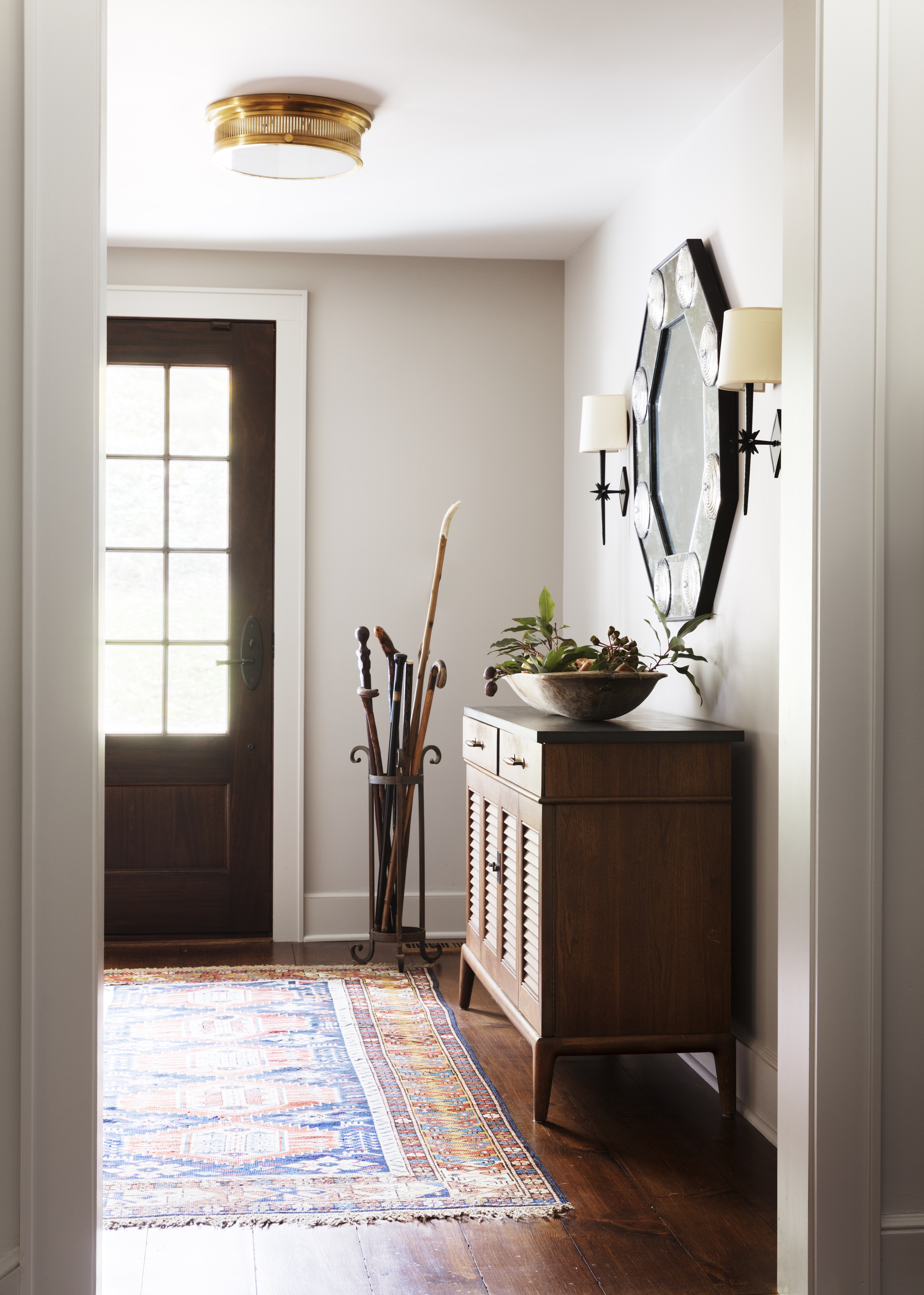
So you may have lost your heart to dramatic pendant lighting ideas, but consider the hanging room you have. Your lighting needs to sit at a height that's practical — no ducking or dodging required — and if you have lower ceilings this can feel a bit limiting.
However, be inspired by the entryway above. The ceiling light is classic but still makes a statement without lowering the ceilings by being too bold or hanging too low. The wall lights then add all the decor you'd want from a bolder pendant light.
"We placed a flush mount from CircaLighting in the front hall of our Riverside Project," explains Heide Hendricks, co-founder of Hendricks Churchill. "Its lower ceilings required a flush mount, but even with the lower ceilings the application warranted a low-key classical fixture to let the sconces be more prominent."
12. Create a point of contrast
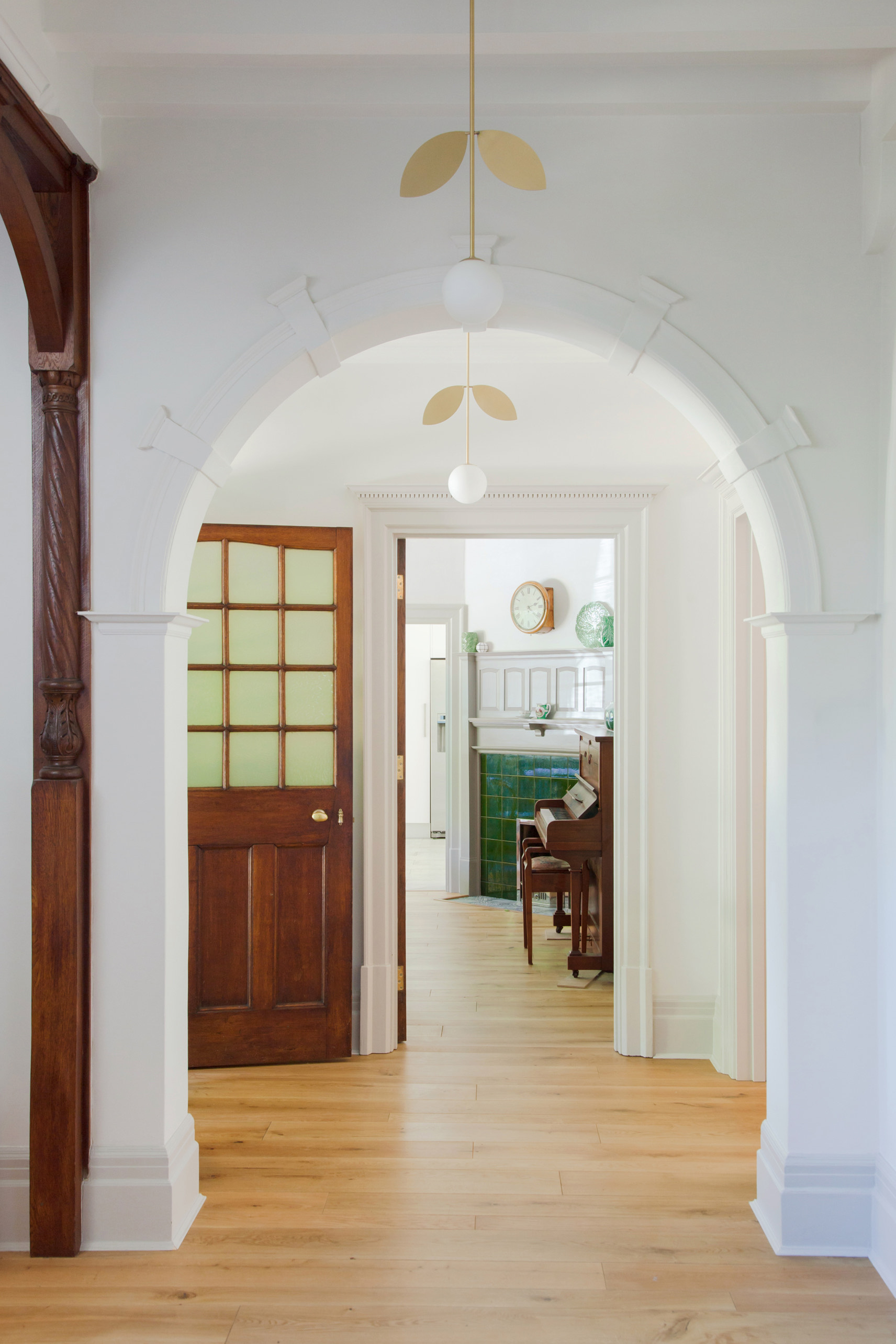
Light fixtures are such a simple way to blend styles within a space — something we always encourage. If your entryway is more on the traditional side, contrast that with simple modern, and sleek light fixtures — or, vice versa, bring an antique chandelier into a contemporary space. It just makes spaces more interesting and gives them depth and character.
Case in point: this space designed by 2LG Studio. "This arts and crafts home was jam-packed full of original and beautiful features so we wanted to keep the hallway light, bright, and airy," explains co-founder Russell Whitehead. "For the lighting, we wanted something super modern that spoke to the arts and crafts movement so chose these beautiful Areti pendant lights that are reminiscent of flowers."
13. Make a statement with ceiling lights

When deciding on lighting for a small hallway or entryway, the go-to is often spotlights. They are discreet, take up zero room, and light the space effectively. But what if you don't want to be discreet? What if you want the lighting to be a feature in your entryway? Ceiling lights come in all shapes and sizes, not just low-hanging pendants, and there are plenty of designs that sit close to the ceiling and can still make an impact.
"Spotlights can be a little overpowering and lack a sense of style," note Jen and Marr, founders of Interior Fox. "Swap spotlights for subtle ceiling light. and if you’re planning from scratch, consider wall lights positioned slightly above head height to avoid any head-on collisions. There are so many great ways to make the best first impression, even in the smallest of spaces."
Top tip, that works for modern apartment entryways or grand sweeping vestibules: always group ceiling lighting in odd numbers. Three ceiling lights add far more visual interest than two, as our eyes don't automatically register odd numbers, so you're going to notice your fixtures far more.
14. Keep it simple with symmetry
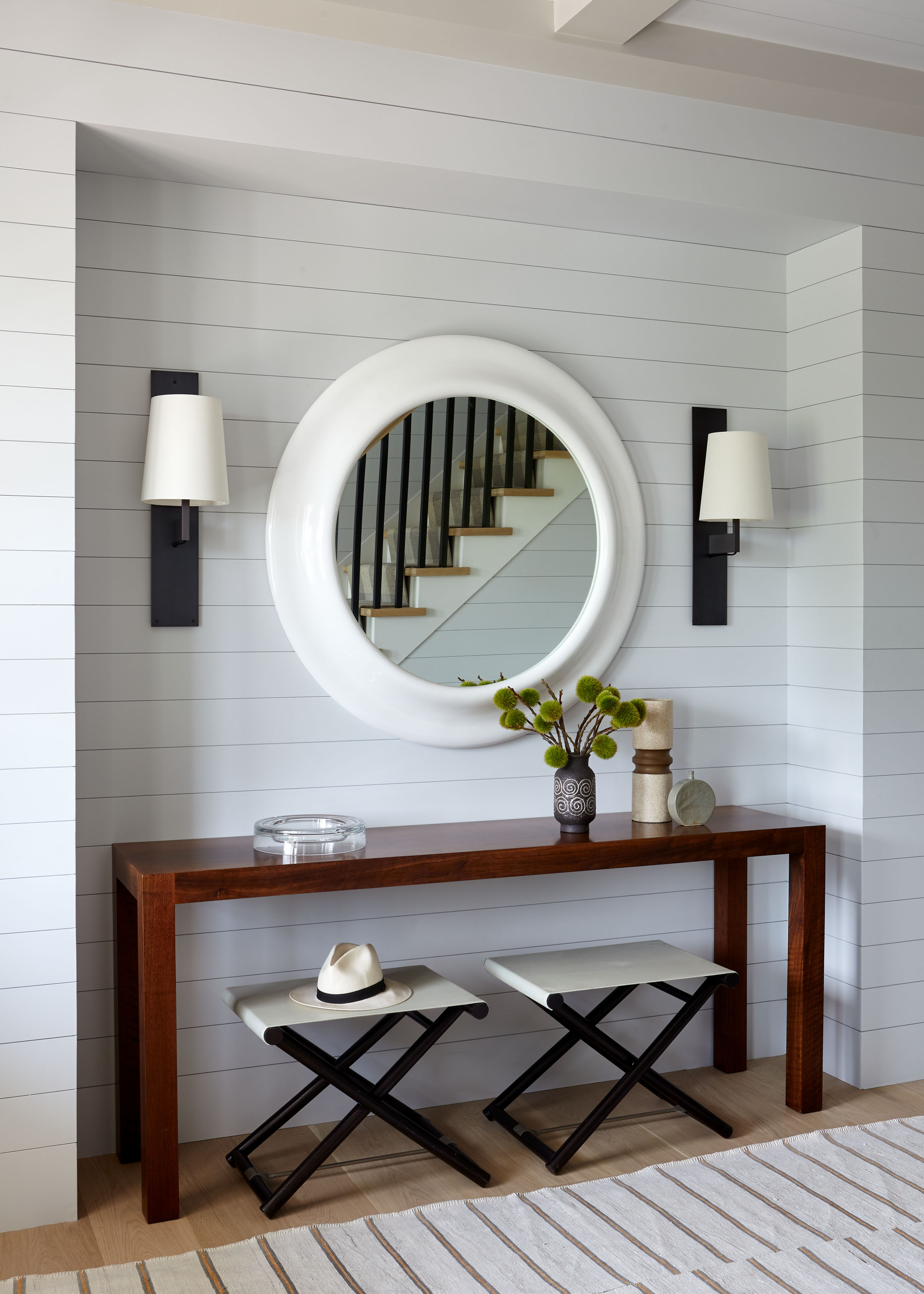
We know what we just said about odd numbers but sometimes you can't go wrong with symmetry. It's timeless and can work with any style. Place two lamps on either side of a console, hang two pendants on either side of a staircase or, as shown in this beautifully beachy space, place two wall lights on either side of a mirror. It gives a wonderfully contrasting formality to this otherwise relaxed entryway.
"When the client purchased this Hamptons beach house compound, it was important that the design convey a comfortable, rustic setting rather than a large formal estate," says the designer, Elena Frampton. "The key was punctuating the white paneling with bronze and steel elements for depth and to avoid the basic white beach house."
15. Create a soft glow with a floor lamp
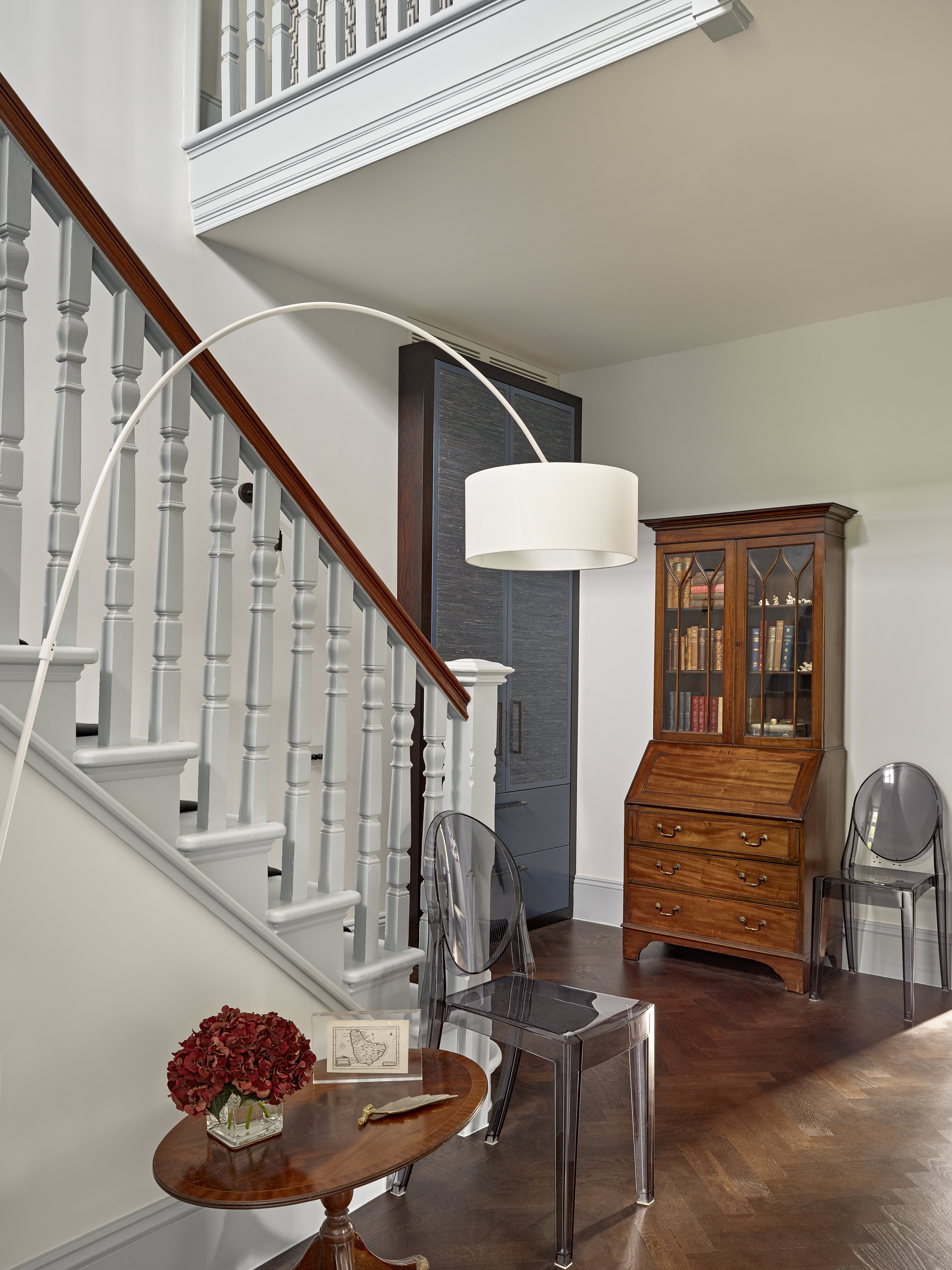
You don't see floor lamps in entryways all too often, but we love that lived-in feel they give to an entryway. It makes it less like a transient space and helps create that layered lighting that's so important for creating a welcoming, all-over glow.
"Lighting in an entryway needs to be layered with functional lighting as well as accent lighting, such as this floor light," says designer Clare Gaskin. "It creates a softer more ambient light and a different atmosphere of an evening when transitioning through the space or welcoming guests."
Think about how the simple addition of a floor lamp can tie in with the rest of your space, too, especially if you have an open-concept floor plan. "If you can, creating a focal point in an entryway can work really well — drawing your eye to something in the hallway or beyond," says Clare. "Do this by lighting something in the distance (or even in another room) such as a downlight centered on a floral display on a table or a picture light above an artwork."
16. Strategically place mirrors to maximize lighting

In a light-starved narrow hallway, you need all the help you can get at maximizing light. Alongside the light fixtures, consider how you can up that lighting in other ways. Mirrors, of course, are known for their space-expanding, light-enhancing effects so hang a mirror below or next to your wall lights to bounce more light around the space.
"Smaller hallways require careful consideration to create visual impact and ensure they work on a practical level," explains James Arkoulis, Creative Director at Howark Design. "In a previous design, we included a large brass mirror to further reflect light and give the illusion of space, while colorful artwork and picture lights added much-needed light and created a warm and inviting entrance to the property."
Similarly, in the space above, both the shaded lamp and the candles are reflected in the mirror when switched on, helping to soften the space.
FAQs
What light fixtures work best in an entryway?
When it comes to lighting your entryway, there is no one-size-fits-all approach. A functional overhead is a good starting block, but don't stop there. "If you have plenty of both wall and floor space, incorporate a mixture of sconces, lamps, and overhead fixtures — whether that be from a singular statement chandelier or multiple pendants," says Helen of Arteriors. "Combinations will offer pools of illumination throughout, rather than harsh lighting from a single, central source."
To make your entryway more adaptable, think about the level of lighting each type of light emits, too. "At the very least, you should put overhead lighting on dimmers to allow you to alter the hallway mood and lower the lighting level in the evening," explains Andrew Griffiths, founder of design studio, A New Day. "Where possible, I look to mix overhead lighting with softer lower-level lighting sources like table lamps or wall lights. Wall lighting can also add real impact in guiding you through corridors."
How should you light a small entryway?
If space is at a premium, wall lights are your best friend since they won't intrude on your floor space. "Discrete and atmospheric, wall lights take precious little space and can provide a decorative flourish," explains Helen. "We have seen lovely examples of customers using wall lights in pairs or trios along the length of the hallway which looks particularly stylish and creates a welcoming, warm glow."







